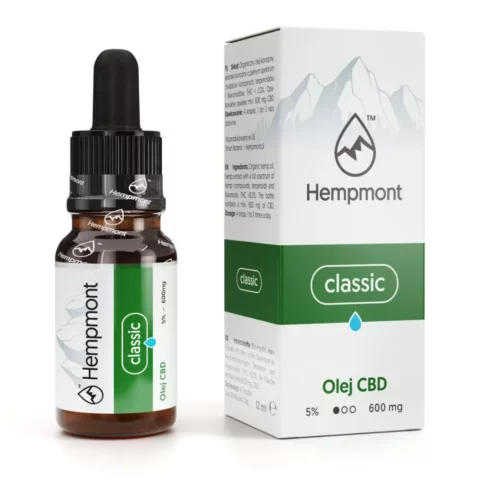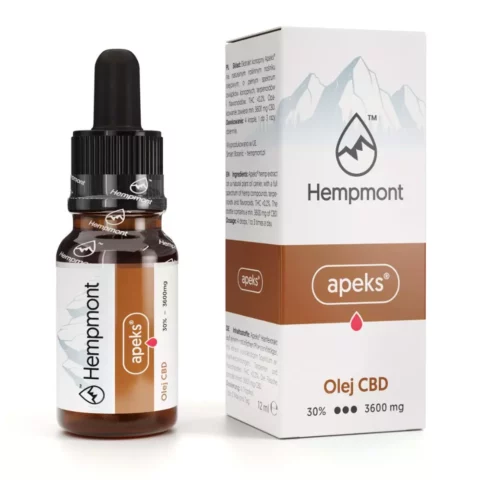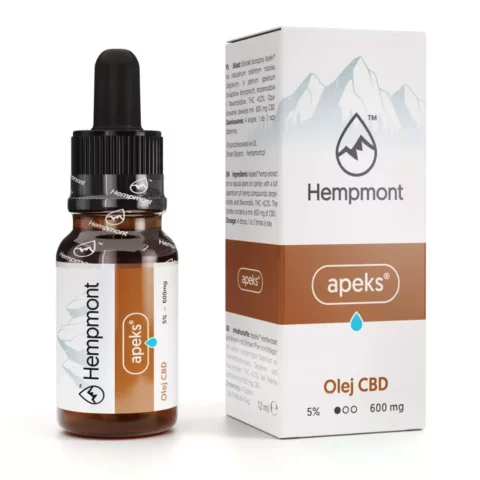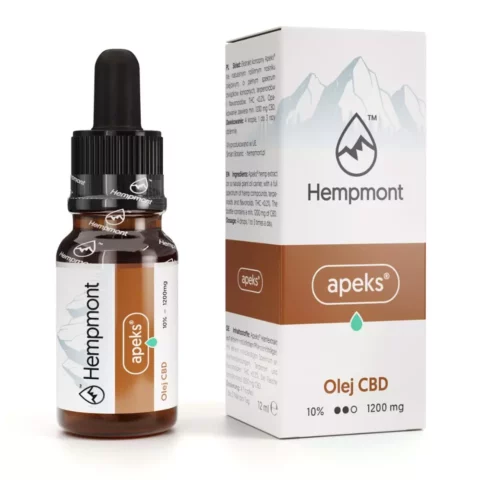
- 11 March 2023
- 0 comments
- 1 Wyświetlenie
Due to the rapid advances in medicine over 100 years, more and more new diseases are being discovered and, consequently, are also being diagnosed in doctors' surgeries. Mycosis fungoides, although not a new disease, has recently gained in popularity and patients often leave the doctor with this diagnosis. It can take many forms, from the digestive system to the skin. If it takes a serious form, antibiotics are prescribed, which are not always 100% effective and a second course of antibiotics must then be administered, which is undoubtedly inconvenient for the patient. In such cases, the use of CBD oil for mycosis is a good solution in addition to traditional treatment. It will also prove useful in milder cases, where antibiotics are not yet necessary, but where we nevertheless want to get rid of an unwanted guest. It is natural that several questions arise before taking CBD oil for ringworm. How to use CBD oil for ringworm? Which CBD oil for ringworm? How does CBD oil for ringworm work?
What is ringworm? Ringworm and its types
Ringworm is a disease caused by fungi, which usually develop on the skin, nails, hair, mucous membranes, as well as inside the body (e.g. gastrointestinal tract, respiratory tract). The fungi that cause ringworm are commonly present in the environment and often do not cause the disease, however, under certain conditions (e.g. a weakened immune system) they can grow and cause disease symptoms. The disease can have various causes. One risk factor is a weakening of the body's immune system, which can occur as a result of chronic diseases, immunosuppressive drugs or chemotherapy. Ringworm can also be contracted through contact with a person with ringworm, using another person's personal hygiene items or through infection in the environment (e.g. sauna, swimming pool or other public places).
There are many types of mycosis fungoides, depending on the location of the disease and the type of fungus causing the infection. The most common include:
- dermatophytosis - caused most often by dermatophytes, it manifests itself by, among other things, redness, itching and scaly or burning skin, as well as blisters or ulcerations;
- onychomycosis - caused by various fungal species, leads to a change in colour, thickening and brittleness of the nails and a change in their shape;
- candidiasis - caused by fungi of the genus Candida, mainly affects mucous membranes (e.g. mouth, vagina) and manifests itself by white patches, burning and itching;
- gastrointestinal mycosis - usually caused by Candida yeast, can lead to diarrhoea, abdominal pain, nausea and other gastrointestinal symptoms
- lungworm - caused by Aspergillus fungi, can be particularly dangerous for people with weakened immune systems.
CBD for ringworm
CBD has research-proven antimicrobial and anti-inflammatory properties, making it helpful in fighting certain types of infection, including bacterial and fungal infections.
Laboratory tests showed, that CBD shows some antifungal properties and may have potential use in treating some fungal infections. In a 2011 study published in the journal Phytotherapy Research, researchers showed that CBD had activity against Candida albicans, one of the most common causes of fungal infections in humans. CBD inhibited the growth and development of these fungi, suggesting that it may have potential as an antifungal agent. Other studies have also shown that CBD may have activity against other fungi, such as Aspergillus fumigatus, the fungus that causes a disease called aspergillosis. In one study, researchers found that CBD inhibited the growth of A. fumigatus in cell cultures and in the lung tissues of mice with aspergillosis infection.
How does CBD work on ringworm?
Research on the effects of CBD on ringworm is still in its early stages and the exact mechanism by which CBD may act on ringworm is not known. Nevertheless, laboratory studies conducted on animal models suggest that CBD may exhibit some antimicrobial and antifungal properties, meaning that it may inhibit fungal growth and development.
One theory suggests that CBD acts on fungi by affecting their metabolism. CBD can affect the metabolic processes in the fungus cells, which can lead to disruption of their growth and reproduction. Another theory is that it may act on fungi by affecting their cell membrane. The cell membrane of a fungus is an important element that enables it to survive and grow. CBD can affect the structure and function of the cell membrane, which can lead to the weakening of the fungus and inhibition of its growth. There is also a belief that CBD can act on fungi by modulating the body's immune system. CBD can affect immune system function, which can help fight fungal infections by increasing the body's reactivity to the presence of pathogens.
In addition, research indicates that CBD can act as an immunomodulator, a substance that regulates the body's immune system. CBD boosts immunity by acting on the endocannabinoid system and thus helps the body fight infections, including ringworm.
It is also said that many of the antifungal properties of CBD are due to its atomic composition, which includes one hydrogen atom and one oxygen atom. These compounds have an affinity for other molecules that contain oxygen and undergo oxidation. When CBD oxidises fungal cells, they become unable to grow and multiply. This happens because of ergosterol inhibition. CBD's ability to oxidise fungal cells makes them potent antifungal agents. CBD, CBG and CBC are believed to attack fungal cells, which are essentially eukaryotic cells that have well-formed membranes to protect the nuclei. They kill the fungal cells by destroying the cell membrane, which prevents the production of ergosterol - something that provides nourishment for these fungal cells. When the supply of ergosterol stops, the fungal cells eventually die. The good news is that these compounds do their job without harming the surrounding healthy cells.
Studies have also shown that CBD may have antifungal activity against various types of fungi. In in vitro studies, CBD showed activity against Candida albicans, one of the most common causes of fungal infections in humans, and against other types of fungi such as Aspergillus niger, Penicillium expansum, Fusarium graminearum and Rhizopus stolonifer.
Hemp is often seen as a weed due to its proliferation in large quantities in a very short time. These plants have a powerful defence mechanism against viruses, bacteria and fungi and therefore grow without any care or external help. Consequently, they show good anti-fungal properties when they are in the growth phase and before harvest. The reason why cannabis terpenes act as antifungal agents is because of their lipophilic nature. These compounds tend to gel very well with various fats. Therefore, CBD terpenes become easier to destroy the cell membrane of fungal cells and reduce their numbers.
CBD for dermatophytosis. How to use CBD for dermatomycosis?
CBD acts on skin fungal infection by affecting the body's endocannabinoid system. The endocannabinoid system regulates many physiological processes, including inflammation, immune response and skin function. Research suggests that CBD acts on skin fungal infection through several mechanisms. Firstly, it acts on the cannabinoid receptors CB1 and CB2, which are present in the endocannabinoid system. These receptors are present in the skin and affect skin functions, including inflammation and immune response. CBD can act as an agonist for the cannabinoid receptors, meaning that it stimulates them into action, or as an antagonist, meaning that it blocks their action. Secondly, CBD exhibits anti-inflammatory properties, which can be beneficial for fungal skin infections. Fungal infections of the skin often cause inflammation of the skin, which leads to symptoms such as redness, pain and swelling.Thirdly, CBD shows antifungal properties, meaning that it can inhibit the growth and development of fungi, especially Candida albicans. This is because CBD acts on the cell walls of the fungi, causing damage to them and inhibiting their growth.
Furthermore, when it comes to skin fungus, it is worth remembering that CBD can also be used as an ingredient in skin creams and lotions, which have a soothing and anti-inflammatory effect. The use of such a CBD product can help relieve the symptoms of ringworm on the skin, such as itching and irritation. One article published in 2020 in the Journal of Fungi investigated the effects of CBD on Candida albicans and confirmed that CBD has antifungal effects, inhibiting the growth of the fungus. In another study, meanwhile, conducted in 2019, researchers evaluated the effects of CBD on fungal infections in mice. The results of this study suggest that CBD may have antimicrobial and antifungal effects, which is definitely encouraging.
In types of ringworm that are also external in nature, it is worth using a two-pronged treatment - from the outside and from the inside. Externally, CBD ointments with a natural formulation can be used, and internally, CBD oil can be used to intensify the desired effect.
Also, do not rely solely on CBD to treat ringworm or other infectious diseases. If you have ringworm, it is important to observe personal hygiene, avoid wearing tight, clinging clothes and shoes, and avoid sharing personal items, such as towels and clothes, with people who are infected with ringworm.
Bibliography:
-
https://www.poradnikzdrowie.pl/zdrowie/dermatologia/grzybica-objawy-i-leczenie-aa-TQ2P-vtsM-rNki.html
-
"Taming THC: potential cannabis synergy and phytocannabinoid-terpenoid entourage effects". 2011 by E.B.Russo https://www.ncbi.nlm.nih.gov/pmc/articles/PMC3165946
-
"Characterization of chrome buffing dust (CBD) generated from NILEST tannery associated with pathogenic fungi" 2014 authors S. D. Emmanueul, I. K. Adamu, A. Ejila, M. I. Ja'afaru, A. Yabaya and B. Habila https://academicjournals.org/journal/JTEHS/article-full-text-pdf/3404ECA47132










